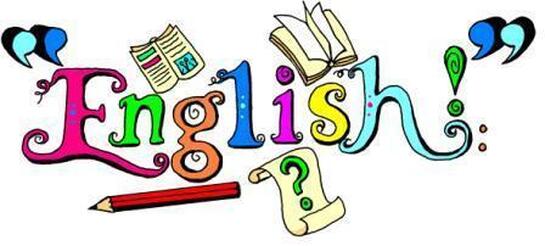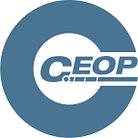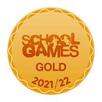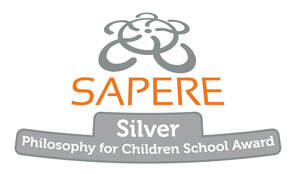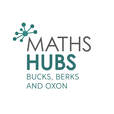English Implementation
OracyOracy is prioritised in order to build vocabulary for all learners in order to understand more complex texts. In addition, we provide a reading rich environment where pupils can access texts which both educate and inspire them. We intend for our pupils to be independent and reflective readers who can read fluently and for meaning. During guided reading sessions, we provide rich, meaningful discussions around texts, where all children feel confident and able to contribute by using their reading skills to access all areas of learning. We also use approaches that encourage children to spot clues and apply strategies to understand texts at a deep level. At IVJS our aim is to bring reading to life so that all children develop a love and passion for reading.
|
Reading
Early Reading and Phonics
The systematic teaching of phonics has a high priority in year 3 when children join our school. At IVJS, we teach phonics using the Little Wandle Systematic Synthetic Phonics (SSP) scheme. Little Wandle is a complete SSP has been validated by the DFE. It draws on the latest research into how children learn best; how to ensure learning stays in children’s long-term memory and how best to enable children to apply their learning to become highly competent readers. During phonics lessons, children are taught the relationship between sounds (phonemes) and written spelling patterns (graphemes) which represent them. When children enter the school, we carry out a baseline assessment in order to identify which phase the children are currently working in so that rapid progression can be made and any gaps can be filled quickly. We continue to assess children's phonic skills each half-term to monitor progression.
Children in year 3 are grouped based on the current phase they are working in and then taught regular phonics sessions. Phonics teaching is continued across the rest of KS2 for those who need it. Timely intervention is planned for those children who are working below expected standard as soon as their needs are identified. This is to ensure all pupils develop a comprehensive knowledge of the phonemes and graphemes so that they can begin to develop into more fluent and confident readers. Additional phonics sessions are taught in small groups where pupils participate in speaking, listening, spelling and reading activities that are matched to their specific needs.
As part of this scheme, each child who is reading phonetically decodable books participates in multiple reading sessions a week, with a book directly matched to their phonetic knowledge. Each session will have a different focus, either decoding, intonation or comprehension. Decoding sessions focus on decoding the text, with the children concentrating on applying their phonic knowledge and developing fluency when reading the words. Now that the children have practised decoding, and should be reading more fluently, they will re-read the same text focusing on reading for meaning, stress and intonation. Subsequently, children should be automatically applying their decoding skills to read with greater accuracy and fluency, enabling their working memory to focus on comprehension.
Once the children have completed the sessions, they will then be assigned the text in the form of an e-book. If your child is receiving phonics teaching, you should find a note detailing their username and password in their reading record. As they will already have read the text at school, it should mean that they are reading the text confidently, fluently and independently. This text is for them to read aloud to you. Whilst this may seem like the book is too easy, the purpose is for them to show you what they can do. This will really help their confidence as they will be able to read this book well.
Children in year 3 are grouped based on the current phase they are working in and then taught regular phonics sessions. Phonics teaching is continued across the rest of KS2 for those who need it. Timely intervention is planned for those children who are working below expected standard as soon as their needs are identified. This is to ensure all pupils develop a comprehensive knowledge of the phonemes and graphemes so that they can begin to develop into more fluent and confident readers. Additional phonics sessions are taught in small groups where pupils participate in speaking, listening, spelling and reading activities that are matched to their specific needs.
As part of this scheme, each child who is reading phonetically decodable books participates in multiple reading sessions a week, with a book directly matched to their phonetic knowledge. Each session will have a different focus, either decoding, intonation or comprehension. Decoding sessions focus on decoding the text, with the children concentrating on applying their phonic knowledge and developing fluency when reading the words. Now that the children have practised decoding, and should be reading more fluently, they will re-read the same text focusing on reading for meaning, stress and intonation. Subsequently, children should be automatically applying their decoding skills to read with greater accuracy and fluency, enabling their working memory to focus on comprehension.
Once the children have completed the sessions, they will then be assigned the text in the form of an e-book. If your child is receiving phonics teaching, you should find a note detailing their username and password in their reading record. As they will already have read the text at school, it should mean that they are reading the text confidently, fluently and independently. This text is for them to read aloud to you. Whilst this may seem like the book is too easy, the purpose is for them to show you what they can do. This will really help their confidence as they will be able to read this book well.
Guided Reading
We recognise that systematic, high quality phonics teaching is essential, but additional skills and opportunities are required for children to achieve the goal of being a well-rounder reader. When pupils have completed the phonics programme and are secure word level readers, reading is developed during whole class guided reading sessions, using high quality text and focused skill teaching. Strong links are made between reading and writing so that skills and strategies can develop between the two. Children read and enjoy high quality fiction, non-fiction and poetry, which are linked to topics across the curriculum where relevant.
During Guided Reading lessons, there is a heavy focus on reading from a variety of high quality, language rich texts and genres by established authors. Additionally, where possible the work is linked to English lessons. Here, the focus is on reading for understanding and pleasure. Children are taught reading techniques and skills and learn how meaning is conveyed through vocabulary and punctuation so that they can apply this in their written work.
During Guided Reading lessons, there is a heavy focus on reading from a variety of high quality, language rich texts and genres by established authors. Additionally, where possible the work is linked to English lessons. Here, the focus is on reading for understanding and pleasure. Children are taught reading techniques and skills and learn how meaning is conveyed through vocabulary and punctuation so that they can apply this in their written work.
Writing and Grammar
We use high quality, language rich texts to support the children's writing. When planning the unit of writing, teachers follow a writing cycle structure. Depending on the genre and style of writing the cycle will either be one or two weeks long.
The first stage of the cycle is ‘feature analysis’. This is where the children look at the specific organisational and grammatical features of a model text in order to identify the style and structure required for this piece of writing. This is followed by the planning phase where the children begin gathering ideas for their piece of writing. After planning, children begin drafting their piece of work. After drafting, children edit their work using ‘purple polishers’. Each editing lesson has a specific focus where teachers model and directly teach the skills required for editing. Children use the success criteria as a guide to ensure they have all of the features required to make it a successful piece of writing. Throughout the writing cycle teachers use yellow highlighters to identify words, sentences or paragraphs which require editing; providing a scaffold for children to develop this skill. At the start of each English lesson children are taught a grammar starter which is generally linked to the style of writing being taught.
The first stage of the cycle is ‘feature analysis’. This is where the children look at the specific organisational and grammatical features of a model text in order to identify the style and structure required for this piece of writing. This is followed by the planning phase where the children begin gathering ideas for their piece of writing. After planning, children begin drafting their piece of work. After drafting, children edit their work using ‘purple polishers’. Each editing lesson has a specific focus where teachers model and directly teach the skills required for editing. Children use the success criteria as a guide to ensure they have all of the features required to make it a successful piece of writing. Throughout the writing cycle teachers use yellow highlighters to identify words, sentences or paragraphs which require editing; providing a scaffold for children to develop this skill. At the start of each English lesson children are taught a grammar starter which is generally linked to the style of writing being taught.
Vocabulary
At IVJS we believe it is important to support pupils in developing a broad vocabulary. This will help to ensure that pupils are able to confidently articulate themselves both verbally and in writing. When teaching vocabulary, we categorise it into 3 tiers:
Tier 1 – Basic/Everyday Vocabulary
Tier 2 - High Frequency Words or those with Multiple Meanings
Tier 3 – Technical/Subject Specific Vocabulary
Pupils at IVJS are supported in learning both Tier 2 and Tier 3 vocabulary and encouraged to use these words appropriately in context. In order to ensure all children develop a broad vocabulary, it is a focus in all curriculum areas.
Tier 1 – Basic/Everyday Vocabulary
Tier 2 - High Frequency Words or those with Multiple Meanings
Tier 3 – Technical/Subject Specific Vocabulary
Pupils at IVJS are supported in learning both Tier 2 and Tier 3 vocabulary and encouraged to use these words appropriately in context. In order to ensure all children develop a broad vocabulary, it is a focus in all curriculum areas.
Spelling
Below are the common exception words for each phase. The children are expected to be able to read and spell these by the end of each phase. Common exception words are those words in which the English Spelling code works in an unusual or uncommon way. They may be exceptions to spelling rules, or words which use a particular combination of letters to represent sound patterns in a rare or unique way.
Handwriting
At IVJS we teach and use a cursive style of handwriting. Research has shown that the use of a continuous cursive handwriting style plays a significant role, not only in developing fine motor skills but also in learning spelling patterns. This is particularly important for children who struggle with spelling and find decoding writing patterns challenging. Once this skill has developed, the child can then focus on the content and structure of writing rather than the disconnected process of letter recollection. The brain thinks more rapidly and fluently in whole words rather than in single letters. Cursive handwriting therefore encourages fluidity of thought, makes writing quicker and improves spelling through muscle memory.
Link to LetterJoin
Link to LetterJoin
